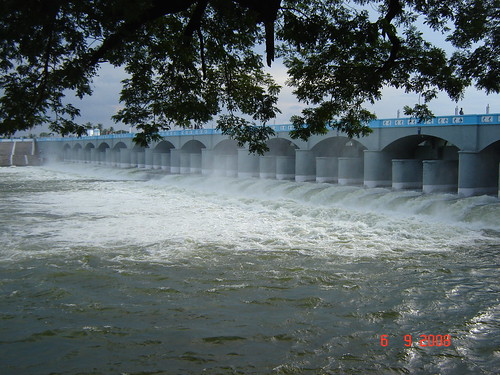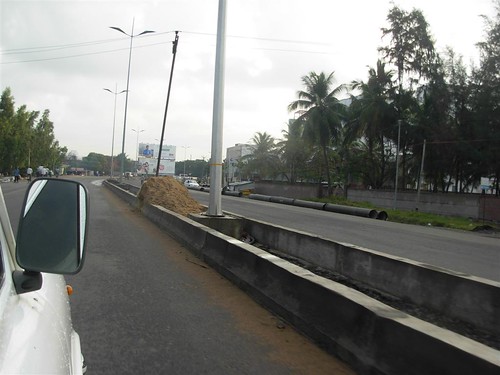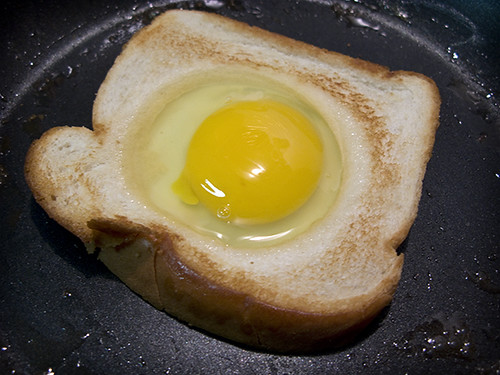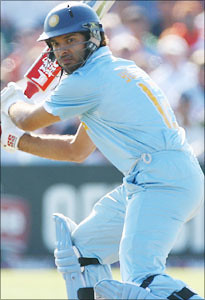There is far more harm done by taking too much food than there is by taking too little, and it is only in very exceptional cases that injury results from the latter cause; whereas an enormous amount of discomfort, disorder and disease, and even curtailment of life, arises from excessive eating."— Dr. N. E. Yorke-Davies.
The question of diet is of primary importance to every student desirous of acquiring a strong and beautiful body. His careful attention must be given to it at the very outset of his endeavors to attain a high degree of physical development. .
The following questions will suggest themselves to him. What shall I eat? What kind of food and what quantity will best nourish the body? What foods will give me the greatest strength, and enable me to speedily build up properly distributed muscular tissue?
These are important questions and call for careful consideration. The average individual who has been able to maintain an ordinary degree of health through life, notwithstanding the dietetic evils against which his functional system has constantly contended, usually seeks to "make fun" of you when you talk of dieting. He will tell you that he has lived on "ordinary" foods all his life, that he is healthy, and that his parents were healthy before him.
"Don't .bother with diet. Eat plain, wholesome foods, and don't be led into a lot of foolish experiments by cranks," is the advice that will_ frequently be given-you. Your friends may be more considerate and kindly in their- remarks, but your near, dear relatives will have- no scruples about your feelings. They will not hesitate to tell you candidly that you are a fool and that you must be going crazy indeed. And not infrequently, although you may be convinced beyond all possible doubt that you are right, you will remain in the "old ruts" merely to avoid the irritation of being constantly nagged by those .with whom you live.
Now I intend to discuss diet from an absolutely unprejudiced viewpoint. I would like thy readers to' be familiar with every phase of this subject. I will try to consider the several advantages that are supposed to accrue from adopting various diets, and will draw impartial conclusions therefrom.
First of all, what is the object of food? You will answer, to nourish the body, that it may at all times be maintained in the highest degree of health and strength. How can we determine what are the best foods to nourish the body? The most convincing method would be to compare the results that follow the use of each of the various dietary systems. I must admit, however, that such comparisons are exceedingly difficult to make.
The human organs of digestion must possess most wonderful powers. No species of the lower animal world could exist on such a variety of foods as does man.
No lower animal could abuse his organs of digestion as do many human beings and still be able to maintain life. An ostrich is said to have a strong stomach, but it would soon turn up its toes if it were compelled to live on the abominable mixtures that human beings swallow. And it is these remarkable powers of our digestive organs that make it possible for them to secure a certain amount of nourishment from almost any food furnished them.
Following our suggested line of reasoning, that the object of food is to nourish the body, then that food which most perfectly performs this purpose will undoubtedly be the most preferable. This necessarily brings us to a consideration of the varying conditions and needs of the body. At one time a certain article of food is demanded. At other times another seems the best. Desirable food, therefore, is that which supplies the body with the particular elements of nourishment needed at a given period.
Therefore, with this fact fully considered, we can-not say that any one kind of food is always the best.
Variety in food, to a limited extent, is to be desired so long as wholesomeness is maintained. If we were to confine our diet to two or three articles of food, they would, after a time, cease to be appetizing. But, even under such conditions, a short fast would soon cause the appetite to return with renewed vigor.
If certain articles of food are adapted to nourishing the body at certain times, how then is the physical culture student to be guided?
Here is shown a very wise provision of Nature. That food which is most needed at a particular time is always craved by the appetite. The normal appetite is a safe and certain guide in this regard.
Although theories of this nature are undoubtedly of interest, those advanced by individuals who favor the various methods of diet would, no doubt, be considered of far more importance.
What are the advantages of these unusual dietaries over the ordinary cooked food as used by the average individual? Although there is, perhaps, a vast variety of dietaries advised by persons who have closely studied these subjects, the systems of especial interest besides the usual mixed diet, are, no doubt,
(1) Vegetarianism.
(2) Natural or Uncooked Diet.
Now what is a vegetarian diet? Wherein does it differ from ordinary diet, and what advantages, if any, does it offer to the average person?
Before answering this query I would like to call attention to the digestive process. The illustration here presented shows the entire alimentary canal.
The changes that take place in the food in the process of digestion really begin in the mouth. This indicates very clearly the importance of thorough mastication. For the more thoroughly the food is ground by the teeth and mixed with the saliva, the better it is prepared for the stomach and intestinal digestion.
The absorption of food also begins in the mouth, and continues almost throughout the entire alimentary canal, though the process is carried on mostly in the stomach and the small intestine.
Entire alimentary canal where the digestive processes are carried on.
After the entrance of the food into the stomach the digestive fluids gradually permeate it, and with the aid of the churning motion of the organ, induce changes that slowly bring the contents to a state where the particular elements of nourishment needed by the body at the time are assimilated by the latter.
Now all that is absorbed from the contents of the-alimentary canal is "nourishment." All that cannot be used is "waste." It is a most wise provision of Nature, which gives these delicately constructed organs the power of choosing the particular food elements needed.
But the "waste" is also of importance as it gives a requisite bulk to the food and it facilitates the peristaltic action of the bowels so necessary to the regularity of the excretory processes.
Now some foods contain stimulating substances, in addition to the nourishment and harmless waste. A stimulant is always an element harmful to the body. The organs with which it comes in contact recognize it as a poison and every effort is made to eliminate it,
Foods therefore contain both (1) Nourishment, and (2) Waste.
They may be (1) Non-stimulating, or (2) Stimulating.
They may be (1) Digested normally, or (2) Digestion may be made more difficult by elaborate mixtures or prolonged preparation of the food.
Now the ordinary diet of the average person contains, in addition to the foods providing sufficient nourishment and waste, many elements that by improper preparation are made difficult to digest, and yet others that are stimulating in their influence. Meat, for instance, contains a considerable amount of impure foreign matter, which acts as a stimulant to the functional system. In an extremely mild way it is similar to alcohol in its influence. Hot biscuit, rolls, and bread made from bolted white flour, be-sides being deprived of valuable nutritive qualities necessary for the making of bone and muscle, are al-ways difficult to digest.
Therefore, the ordinary mixed diet is the cause of much waste of functional strength. Much nervous energy is required to eliminate the foreign and impure matter in the meat. Much energy is also wasted in digesting unwholesome and improperly cooked foods.
There are two classes of vegetarians, those who use milk and eggs, and those who absolutely refrain from every food of an animal nature. In recommending a vegetarian diet to one accustomed to meat, I would suggest that one . used by the first named of the classes. Not that I believe that we cannot be prop-- erly nourished without the aid of cows and hens, but for. those accustomed to the ordinary diet, a sudden change therefrom to a strictly vegetarian menu is rather severe. It would be well to note, however, that milk and eggs if used when fresh, do not contain the same impure elements that give to meat its stimulating and poisonous qualities.
Now a properly arranged vegetarian diet contains nourishment and waste. There is no stimulating food in it. It supplies the body with all needed replenishment, and- contains only sufficient waste to enable the eliminating organs to properly perform their duties.
I must admit that many who call themselves vegetarians seem to be poorly nourished. Often they look weak and wan and thin. But so do thousands of people who are not vegetarians ! You can suffer from malnutrition on a vegetarian diet as easily as on a mixed diet if you do not eat the proper kinds of food. The great trouble with the men who were courageous enough heretofore to break away from the meat superstition was, that they did not have a sufficient knowledge of dietetics to select a rational diet. But with the advent of physical culture into this field, a diet has been formulated that supplies every element of nourishment needed by the body.
If one leaves meat out of his dietary he must use those foods that will furnish lacking elements of nourishment. Whenever you find a vegetarian who does not look healthy, you can depend upon it with absolute certainty that either he is not eating the necessary substitutes for meat, or else he is not taking the exercise essential to maintaining the body in perfect condition.
Now let us turn to the natural or uncooked diet. What are its advantages over the vegetarian or the ordinary mixed diet?
Every physical culture student who knows any-thing of physiology understands that no simple or detached elements can ever serve the body as food. In other words, they must be taken in the form of chemical combinations such as we find in vegetable or animal foods. A chemist can take a grain of wheat for example, analyze it in his laboratory, and supply you with its exact elements. But these elements in this state would be useless as food. When animal and vegetable substances are reduced to their elementary constituents they lose their food value. A grain of wheat contains, in almost perfect proportions, the elements that are needed to maintain life and health and strength, but if it goes through the process that brings it back to its original elements it becomes valueless as a food.
There are certain changes-in our food stuffs which Nature has made provision to carry on in the body. If these processes could not be done better by our digestive organs than by the stove; we would not have been given the former. Many of the imperfect changes that take place in food in the process of cooking, would take place in a proper way in our bodies if it was eaten by us in a natural state.
Now the advantage of natural foods over cooked foods lies in the fact that they contain more life-giving, nourishing elements. The process of cooking destroys the life of the cells of the food. This fact should be thoroughly understood by every one of my readers. To be sure, authorities maintain that food is far more easily digested when cooked. This conclusion has not been proven by any means. And even admitting that uncooked food requires a longer time to digest, would not the increased amount of nourishment obtained be worth far more than the extra efforts called for on the part of the digestive processes?
Fruit and vegetables are made up of living cells in the same manner as are our bodies. These cells contain the vitality, the life of the plant.
Cooking makes it necessary for you to increase the quantity eaten in order to secure the needed amount of nourishment. Cooked food contains far more waste matter than does uncooked food. This additional waste must be eliminated by the functional system. More energy, therefore, is required in order to dispose of cooked than uncooked foods.
Those who advocate the ordinary cooked diet will naturally point to the athletic world in order to prove the truth of the theory that such diet is superior to the uncooked.
Such evidence certainly seems conclusive at first thought, and deserves very careful consideration. We admit that nearly all successful athletes of whom we have accurate records live on the ordinary foods. When training they, of course, avoid many articles known to be difficult to digest, or to be deficient in nourishing qualities, but beef, chicken, mutton chops and so forth make up a large portion of their dietary.
The average athletic trainer considers these articles of food essential in building the highest degree of muscular endurance and vigor.
Now, in the face of these plain facts, how can I maintain that the ordinary food, cooked according to the accepted standards, is not all that can be desired 7
To digress for a moment let me ask my readers to remember that nearly all of those who adopt a vegetarian or natural diet have been induced to do so because of ill health. And those who make such a change- are often termed peculiar, and "cranky." But you can well afford to be "cranky" if such change enables you to pass from weakness to strength. -.
I have shown that foods consist of nourishment and waste. I maintain that in natural, uncooked foods there is less waste than in those cooked. There is far less foreign matter, or impurities. The absorbent glands, when in a normal condition, take up only those elements needed to nourish the body, but when the bowels are crowded with indigestible and unwholesome foods, abnormal conditions are created and impurities are frequently absorbed into the system. This becomes necessary in order more quickly to eliminate them. Alcohol, for instance, is very readily taken up and distributed throughout the en-tire body. Every organ of the body recognizes it as a poison, and -assists in the work of speedy elimination.
Natural, uncooked foods contain no stimulating elements, no undue waste, while their life cells are maintained in all their natural, healthy, vitalizing building qualities. They are not injured and de-vitalized by cooking. They are not made difficult to digest by prolonged and unwholesome preparation. They contain all the nourishment needed in order to maintain the strength of the body with a minimum of waste. The amount of nourishment in food is decreased, and the amount of waste increased, when it is prepared on the cook stove.
But let us turn again to the athlete. Why have not our celebrated athletes given a diet of this character a trial? This first reason is, because such a suggestion has never been brought to their attention. The aver-age athlete possesses an innate high degree of vital strength. Few of them have turned to training methods in order to regain health and strength, and the necessity for any particular diet has therefore never been especially emphasized as far as they were concerned.
Athletes will recognize the superiority of natural foods when they are defeated by those who use them. In the past, they have maintained their supremacy while following the ordinary mixed diet, because they have competed with men who have lived in the same way. So far, we only have two startling instances in the athletic world of the advantages of uncooked foods over the ordinary vegetarian and mixed diet. One of such to which I refer was a hundred and twenty-five mile race that took place in Germany. It was won by an athlete who had lived almost exclusively upon uncooked foods for several years. In competition with him were nineteen vegetarians and twelve meat eaters. He beat the best meat eater by more than eight hours, and the best vegetarian by more than two hours. In this case, the advantages of natural foods were very clearly demonstrated.
The second instance is recent and-is that of a three hundred and sixty-five mile walk by four Cornell College athletes, three of whom were meat eaters and one a -physical culturist and raw food advocate. On the third day of this severe trial of physical endurance, one of the meat eaters dropped from the killing pace, on the fifth day another and the third one of the party followed soon after. H. F. Porter, the young athlete who had lived on a diet of raw eggs, milk, fruit and other sustaining uncooked food, was the only one who succeeded in coming in at the finish.
And, what is more remarkable, from the healthful who exercise that such a long walk affords and from the foods that went to supply the needs of the increased demands of the body, this young athlete actually gained in weight during the contest.
Now, I do not maintain for a moment that one can-not acquire a high degree of health on the ordinary diet used in nearly every household, provided care be used in avoiding indigestible and unwholesome foods and made dishes. Many men and women have lived to a great age, who all their lives have been accustomed to the use of cooked foods. But it must be remembered that the average individual of to-day, especially he who lives in the city, is housed under debilitating conditions, and gets little exercise and fresh air, cannot compare himself to his parents or grandparents who lived, more or less, out in the open, and obtained plenty of exercise besides being free from the enervating, wasting conditions that con-front us in this present age.
I do not wish my readers to think that they must necessarily live on natural foods at the expense of isolating themselves from their friends and relatives. If it is difficult to obtain and use natural foods, it may be better for you to live as do others of your family, provided that you exercise and bathe regularly, and breathe plenty of fresh air at all times.
Remember that a mixed diet contains a little more waste and is somewhat more stimulating than other diets, and that a cooked vegetarian diet contains a little more waste than a natural diet. Therefore, the mixed and cooked vegetarian diets require a little more functional effort on the part of the body than the natural diet. Your digestive organs have to work somewhat harder. Illness or the effort of Nature to cleanse the body of impurities that have ac-cumulated through foods of the mixed type, may sometimes -result, but you may perhaps V remain as well And healthy in early adult life—as you would if using the natural diet, especially if considerable vital strength is possessed by you.
Athletic ability means the possession of muscular strength. Such strength cannot be acquired and maintained without the. development of muscles by regular -and prolonged use. It matters not what diet you may adopt, your muscles must be used in order to acquire that strength essential for successful comtain extent, explains why one who adopis the natural petition in difficult- athletic contests. This, to a certainlly and defeat every athlete who may attempt to compete with him.
In order to develop strength there must first be a call or need for if, and though the influence of diet is unquestionably of great importance, yet in the early diet is not able to enter the athletic arena immediate years of adult life, when one is in possession of all the vigor, vitality and energy that come with a good inheritance and an active life, no matter what diet may be adopted, the assimilative organs will usually manage to extract from the food used the nourishment essential to the well-being of the system.
The more vigorous your body is, the more digestive power you possess. The absorbent apparatus of those in vigorous health can take up the required nourishment from almost any wholesome and nourishing article of food. The strong athlete can be well nourished, can be brought to a condition that is essential to success on almost any diet that contains the elements needed to nourish the body, provided he does not stuff his stomach beyond its digestive capabilities.
But more nervous energy will be essential in digesting the ordinary diet. There will be less remaining to be exerted in muscular strength. Yet in early youth this may be so slight as to be hardly worth noticing. The effects of our ill habits of diet are generally evidenced in rapid decay, and weakening after middle age.
The ordinary athlete is supposed to be in his prime at from twenty-two to twenty-eight years of age. When he reaches thirty his best work has been done.
There is rarely any chance for him beyond that age. This condition results from the use of stimulants and cooked foods. The digestive and other internal organs lose their greatest vigor. They have been overworked, and although the normal adult should be at his best at thirty-five, and should maintain this condition for at least fifteen years thereafter, it is a well known fact that but few athletes possess the. strength essential in winning important contests after they have passed the age of thirty.
I firmly believe that natural foods, although they may not be capable of very greatly improving an athlete much beyond his ordinary attainable strength at an early age of, say, twenty-five, will yet enable him to continue improving up to thirty and even thirty-five, and will assist him to retain such superior condition for many years thereafter.
The advantages of natural foods lie in the ease with which the internal functional system is able to transform them into the nourishment that is needed in order to strengthen and beautify the body. They should enable you to remain young nearly all your life.
They are capable of building the highest degree of physical vigor, and they will greatly assist you in maintaining it.
I firmly believe that the athletes of the future will live on uncooked foods. Every athlete who will give a properly arranged diet of this kind a trial will find that his health is better, and in time he will notice a decided increase in strength and endurance.
Of course all this must not be expected at once. You may not notice a very great improvement in a month or two, though a decided difference should be apparent in six months: You must remember that your entire body has been constructed of elements furnished by cooked foods and that the call for nourishment made by the functional system during all your life has been met by them. Now, if you suddenly change your diet, you will not notice a very rapid transformation in your condition. It is a very slow process. Every individual cell in your body must be changed, must be made over, by the new food before any manifest improvement can be noticed.
A patient suffering from cancer sees an indication of his trouble in some part of his body, and imagines that the disease is confined thereto. The surgeon's knife removes the outward signs and the patient believes that he is cured. But in a short time the trouble appears in another part, thus proving that the entire body was permeated with cancerous poisons.
Your body is what your blood makes it. When you begin to furnish foods that make richer and bet-ter blood, there is a gradual metamorphosis. Slowly, day by day, month by month, every cell of your body is renewed, re-shapen so to speak. It has been said that the body changes throughout its entirety every seven years. But it is certain that this change takes place much more often. Yet the process of re-building your body is not one that can be hastened.
Courtesy:www.oldandsold.com






















